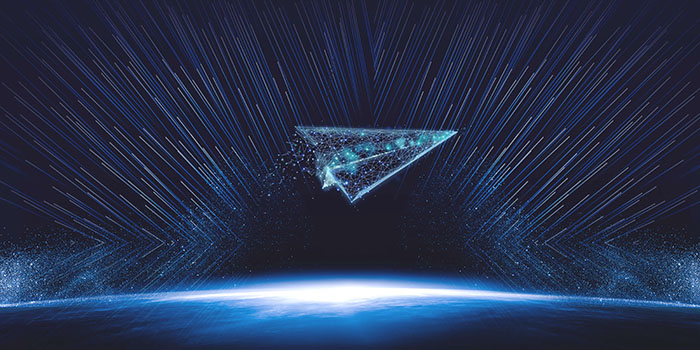From all aspects, in the era of IoT, connection is the core, and IoT applications and IoT communication technologies go hand in hand. Talking about the Internet of Things without considering the different network connectivity models that exist is like talking about the surface without truly examining the importance of this revolution. What does the future look like if you think about connectivity? What opportunities do current communications technologies offer us? What can the development of communication technologies such as 5G, NB-IoT or satellite communications bring us?


5G 4G, the future of mobile communications
The fifth generation of technology that powers mobile phones is coming soon. Planned to be deployed in 2020, the number of resources and interests involved in this “big network” is huge. This is also the network update opportunity that the mobile industry has been waiting for for many years. But that doesn’t diminish the importance of current 4G networks, which will continue to grow in the coming years. For now, 4G remains the main force behind our network connections today, but its transmission limitations herald a change. Of course, while there are plans to replace 4G networks with 5G in some cases, in many other cases technology and computing power will force 5G to share the throne with its 4G predecessor. In fact, 5G is not just designed to maintain a broad network connection experience.
While 4G pioneered the spirit of the Internet of Things, 5G will bring a much greater range of interconnections and resources as the computing, identification, communication and data processing possibilities offered by this technology will all translate into New experience. Thanks to 5G, the input of information, coupled with the possibility of big data and the integration of wearable devices will create a new way to interact and even understand our devices, which will be smarter, more powerful and more dynamic, which will also Including washing machines, bracelets, watches, cars, traffic lights and more. In fact, 5G will allow these devices to become network nodes and gradually move away from the concept of terminals. However, as we mentioned above, this is unlikely to be true for all industries. 4G will continue to support the connectivity created by 5G and create new opportunities.
NB-IoT, coverage continues to expand
Just like LPWAN technology, NB-IoT has huge potential in areas that 4G and 5G cannot reach. One of the main advantages of this technology is that it is really just designed for the Internet of Things, so from the beginning it has perfect integration, thorough standardization and multiple promising projects. NB-IoT mainly focuses on indoor coverage or hard-to-reach local areas. In addition, it allows network connection with minimal energy consumption, thus expanding the number of devices that can be connected to the network.
This makes NB-IOT the perfect technology to connect thousands of smart meters, for example. The network-enabled module is battery-powered and therefore does not need to be connected to the grid, thus extending its range. NB-IoT is a unique opportunity to monitor containers, water, gas consumption, parking lots and even farm livestock. As this technology is implemented, its use will gradually develop, and its very low cost and high degree of autonomy are the main promises of this technology.
Satellite communications: Where other connectivity technologies can’t reach
By 2020, it is expected that 20 billion devices will be connected to the Internet, including cars, mobile phones, wearable devices and appliances. As these types of devices expand across the globe, a question begins to surface. Are we ready to take on such responsibility? No one company or technology can cover all markets in the world, whether geographically or technologically. However, given the ubiquity of IoT, satellites will become increasingly important: they are vital and allow us to raise our expectations. But for this to happen, there must be better services. Currently, provider offerings are almost exclusively limited to L-band, however, changes in Ku and Ka-band forecasts portend an increase in the use of such services.
This increase will benefit the Internet of Things as it can truly connect any device anywhere in the world. Without satellites, IoT is a concept with serious connectivity issues. Satellites provide industrial solutions, remote control, automated vehicle monitoring and banking access at increasingly lower costs, better integration and faster speeds. As this technology develops, the IoT will increasingly benefit from the possibility of being able to connect anywhere, in any situation, even in places that other technologies cannot reach.
Other technologies that should not be ignored
While these three broad categories of technologies will determine the future of connectivity (and already do so now), we can’t forget that other technologies are also in the race. One of them is Bluetooth, which provides short-range connectivity with very low energy consumption. This technology is one of the most commonly used in a variety of devices to maintain a constant connection, even if only to transmit “short” amounts of information; over short distances, Z-Wave and ZigBee technologies are designed for a variety of industrial uses, as well as More restricted than Bluetooth and designed for more specific applications. Both technologies focus more on stability and security than speed; another major player in network connectivity is Sigfox, a broad alternative that could range somewhere between Wi-Fi and mobile networks. Designed from the ground up for the IoT market, Sigfox is particularly useful in situations where little data exchange is required. The technology facilitates battery usage in connected devices and can even extend battery life up to ten years.
The essence of the Internet of Things is to connect the physical world and the digital world. In the future, it will enter a deep integration of the physical world and the digital world and enter a fully intelligent era. Various great technological developments have pushed mankind towards the next era, ultimately realizing the deep integration of the physical world and the digital world and entering the era of artificial intelligence.